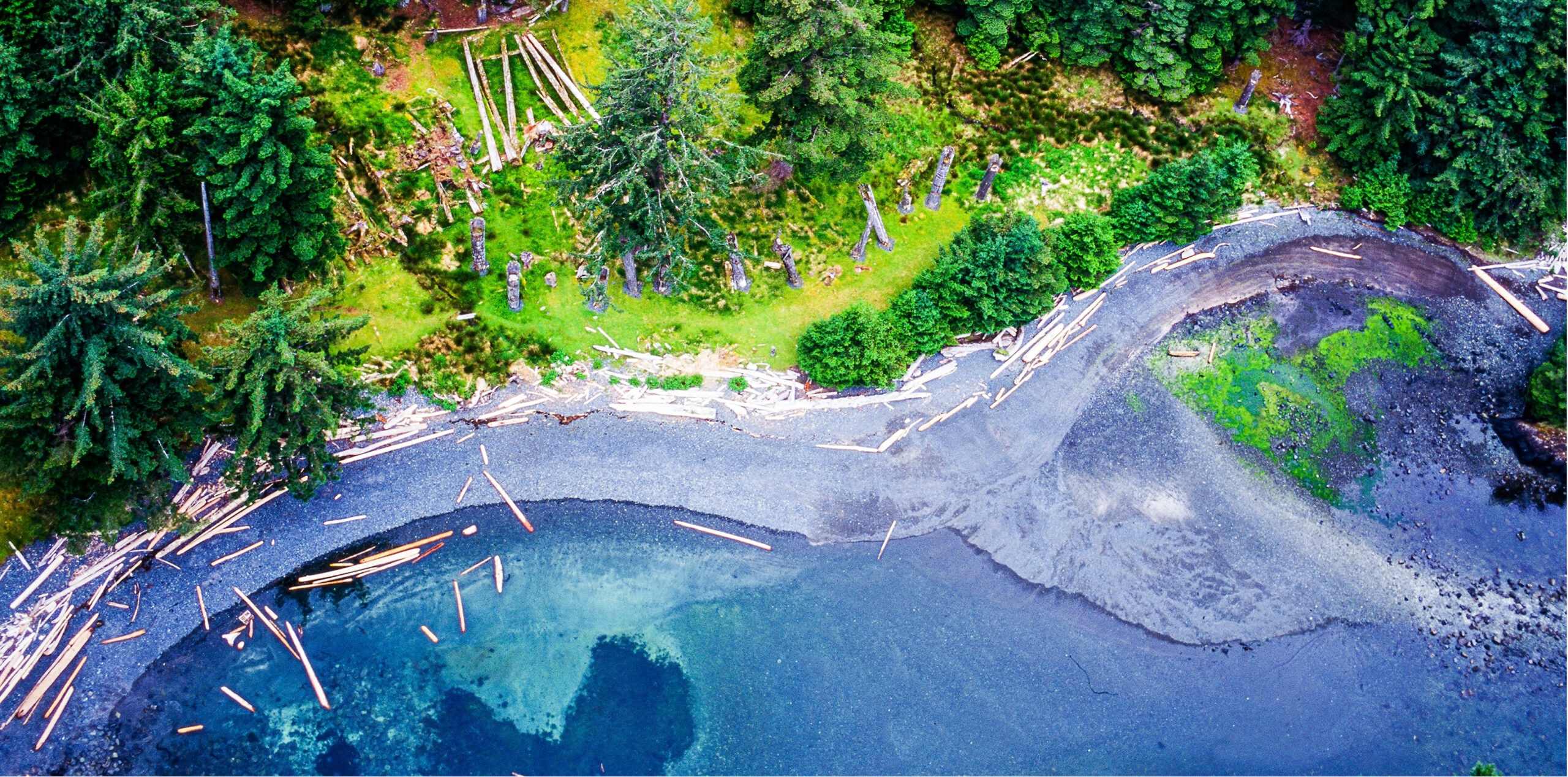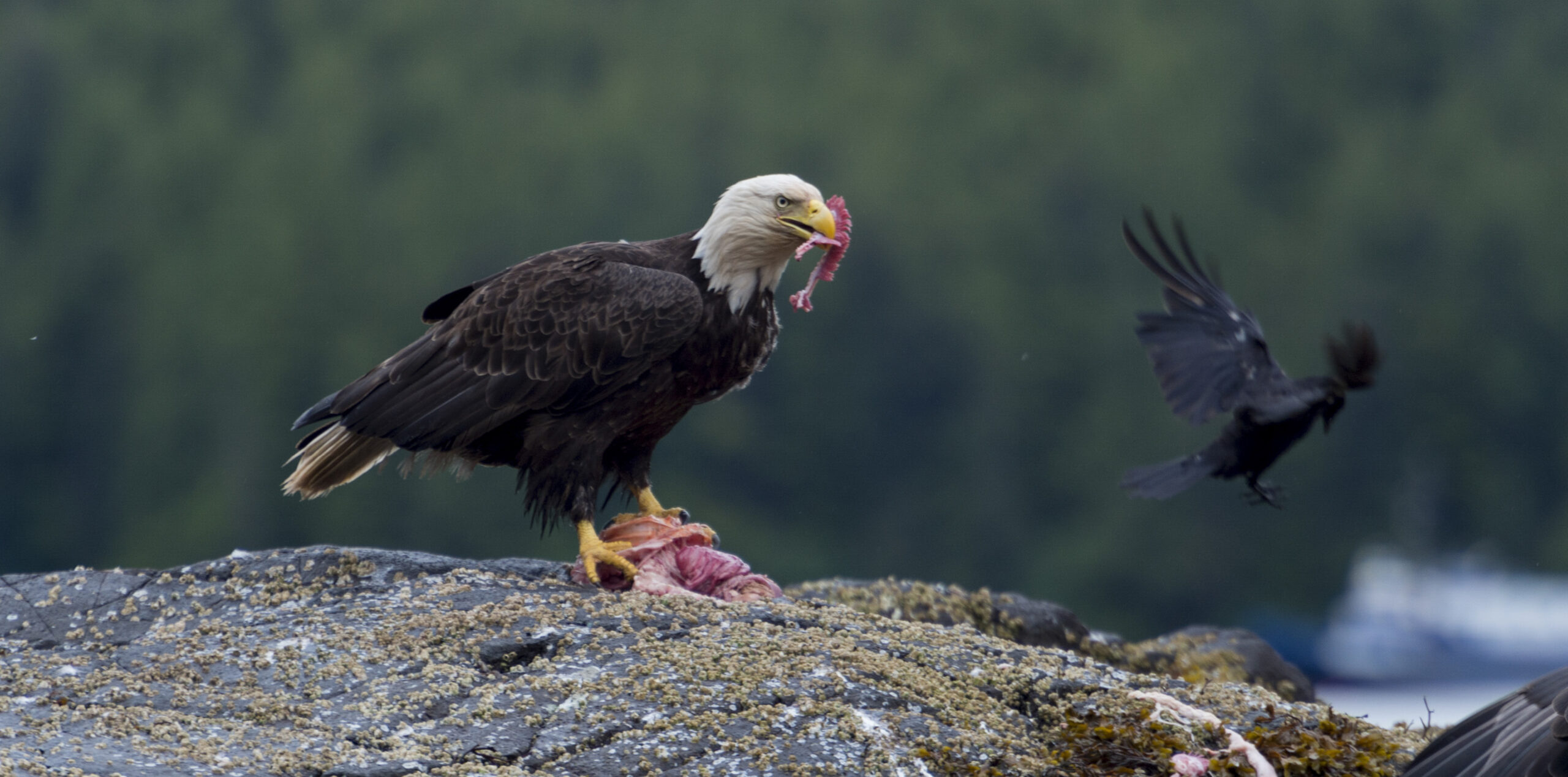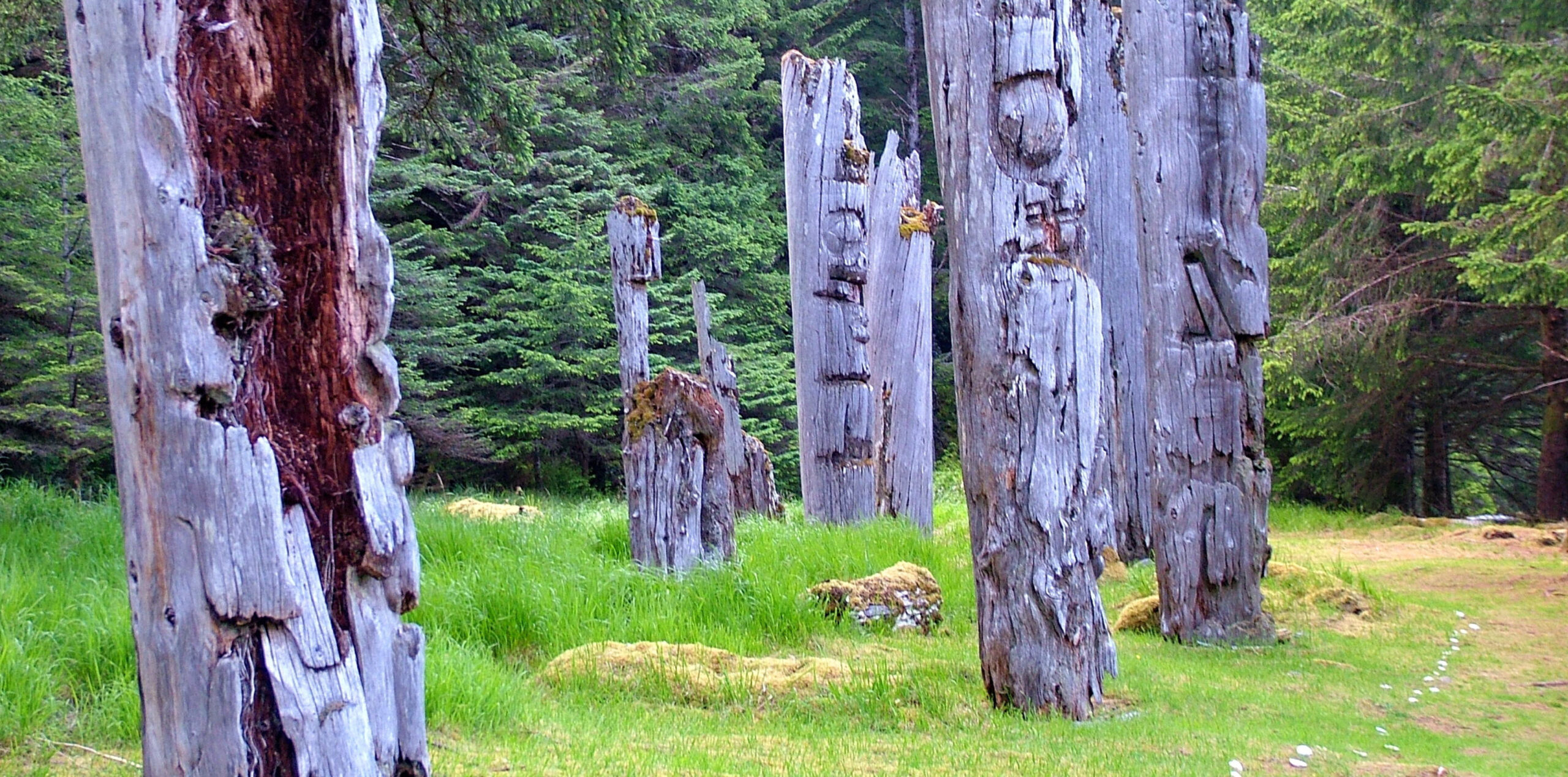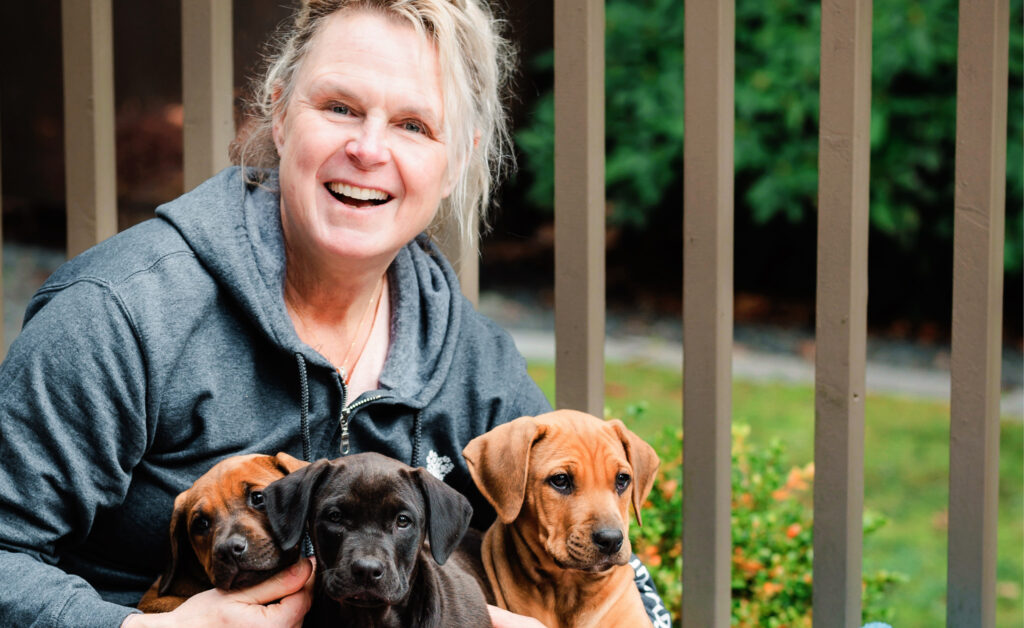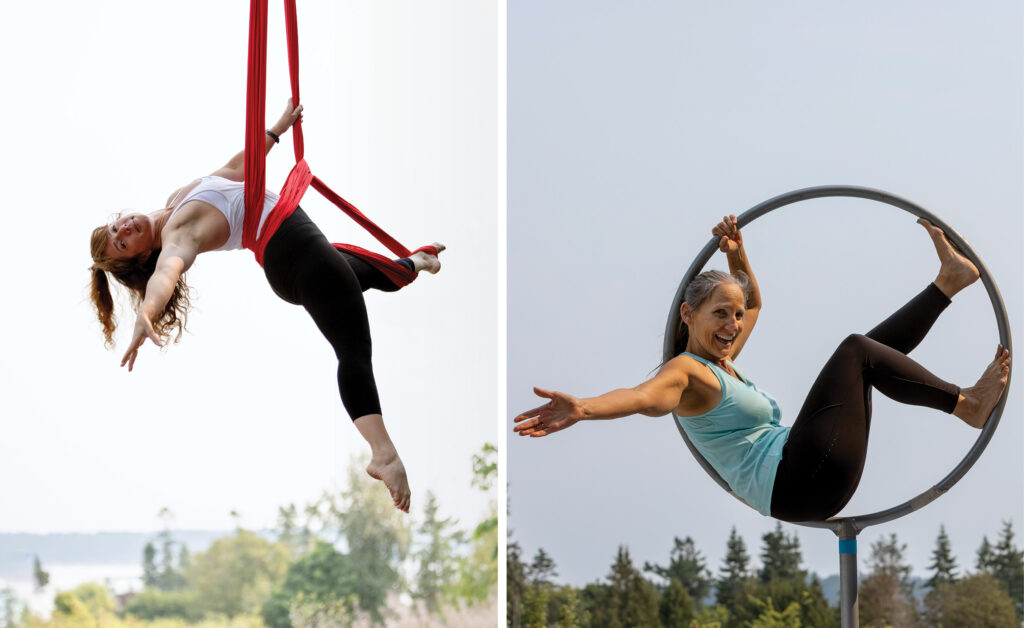story by Valerie Bellefleur –
When I met my second husband, I never dreamed of the adventure ahead of me, and on a perfect summer night we drove from Victoria up to Port Hardy and caught the ferry on a magical adventure through the inner passage to the rain capital: Prince Rupert. Our journey was akin to riding around Cape Horn, through some of the roughest waters in the world complete with lashing winds and people lining up for toilets, taking us 50 miles out into the North Pacific to the land at the end of the world known as Haida Gwaii, or “Islands of the People.”
As we pulled into the misty harbour, the sun broke through the clouds, golden streaks amongst the blue, reminding me of the song You’ll Never Walk Alone from the musical Carousel. The trees were emerald green against a smoky grey sky which sees little sun or snow in winter. The Island has several towns, with Masset at the very tip. From there you can see the edge of Alaska from a stony beach covered in abundant sea life, and numerous species of birds, especially crows, eagles and ravens. It is a smorgasbord of delights, with beaches covered in pink and purple starfish, shells, coloured glass, remnants of ships; it’s a true paradise for the beachcomber.
I remember drinking a glass of clam stew – so comforting in the raw wind and rain. The Haida create beautiful woven hats, baskets and clothing from the reeds and grasses along the shore as well as mask carving. My son Ian became a master carver on his trips to the Island.
There was so much beauty on the Island, with the misty rain keeping everything emerald green, and the fields of flowers that grew in the spring, the crystal blue waters crashing onto the rocks, the northern lights, the angry storms that made the pines sing and howl at night, fishing for ling cod and heavenly Dungeness crab. I took part in the annual fishing derby, loggers day, and the annual chanterelle mushroom picking with people coming from all over the world to pick these red and white fairy-like toadstools.
As beautiful as the Islands were, there was also danger, with fast-approaching tides that took the lives of those who were not quick enough to escape, as well as some people getting lost in the woods. However, the islands were a draw for professionals and the rich and famous who used to come for the fishing, the hot springs, boating and hiking.
Another interesting spot was Mosquito Lake, named after the planes in WWII, along with the hidden bunkers now covered in moss. We caught trout in this clear, crystal lake, marvelling at the eagles circling above or watching from their post atop a pine tree. There were winding logging roads, snow-covered mountains and dirt roads zig-zagging all over the islands. The logging industry was winding down when I lived there, although there was still enough work for the inhabitants living in the small towns. One year there was a tsunami threat where everyone had to scramble to the highest point, but luckily it was called off. Sandspit has a firehall, hotel, grocery store and hairdresser, and airport. There is something about flying in small planes or helicopters over this magnificent jewel of green lands with dark shadows that still draws people today.
When I married, my wedding ring was carved by a Haida woman who etched the eagle and the raven in gold. It is one of my favourite treasures.
I cannot say enough about the haunting beauty of this paradise. I experienced so much and was so taken by the hospitality of the Haida people and the fact that these islands even exist at all. It is a magical adventure and I highly recommend it to those who seek solitude, beauty and peace of mind. I will never forget my time there and the friendship of the other people and the children whom I babysat. I was also so happy to be a part of the celebrations that went on year after year that I was lucky enough to take part in, and learn a new culture.


